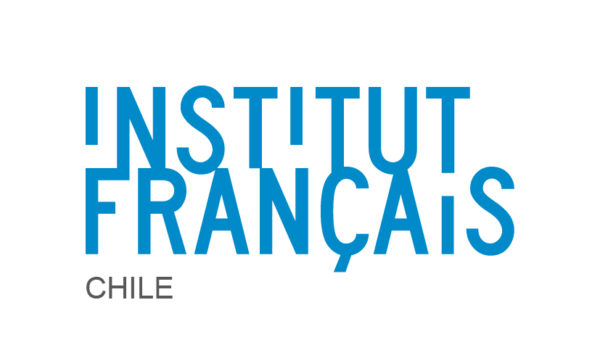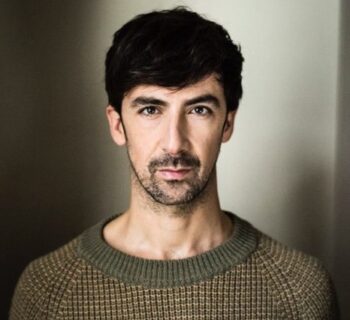Residencia
EXOEXO
El artista francés David Wampach durante su residencia trabajará en torno a los estados del cuerpo, la desnudez y los distintos acercamientos a través de variadas disciplinas.
En 2016, el artista David Wampach comenzó un proyecto llamado ENDO, en donde desarrollaba una estética a través de la exploración de distintos estados del ser. Este proceso creció y se convirtió en una investigación en torno a la representación del cuerpo en la historia de la danza y las artes performáticas. La inspiración surgió de dos movimientos artísticos en específico, ambos a fines de los años ’50 y ’60: el Endoticismo (y una de sus figuras más importantes, Francis Bacon) y una contraparte del arte conceptual: el «Action Art», un movimiento que pone al cuerpo en el corazón de la performance, asociado a artistas como Yves Klein y el grupo japonés, Gutaï, entre otras influencias. El desafío radica en el uso del cuerpo y la carne como el símbolo vivo de lo abstracto, en la realidad efímera que es la danza y el movimiento. Al darle otra mirada a las distintas representaciones del movimiento a través de la historia del arte, Wampach seguirá investigando en este nuevo proyecto llamado EXOEXO.
Durante su residencia en NAVE, el artista extenderá su investigación hacia la representación del movimiento, con un nuevo grupo de artistas y coreógrafos radicados en Chile. Algunos de ellos, ya los conoció a través de distintos laboratorios que realizó hace 3 años atrás, específicamente en noviembre de 2014, en Santiago, Concepción y Valdivia. Al grupo se sumarán otros artistas (bailarines, actores, artistas visuales, sonidistas) que el coreógrafo todavía no conoce pero a quienes invitará a NAVE. El objetivo principal de su residencia es el compartir sus herramientas de investigación en las dos semanas que durará entre un grupo de 10 artistas. Se creará una plataforma y un contenedor de reflexiones, a través de prácticas y rituales, como el corazón del círculo, el trance colectivo, la exploración de la desnudez (al analizar el sentido detrás de la desnudez), transformando la representación de uno mismo, explorando distintos ángulos a partir de nuevos acercamientos. Para esto, se trabajará con maquillaje, pintura en el cuerpo, vestuarios, comida. Este será un proceso que irá de lo conocido a lo desconocido, que apuntará a la expresión y al escuchar, al ver y ser visto, al crear posibilidades.
Colaboradores en la residencia: Álvaro Facuse, Rafael Silva, Daniela Santibáñez, Javiera González, María Jesús Pavez, Carla Bolgeri, Pedro González, Tomás Riveros, Ninoska Soto, Javiera Peón-Veiga.
Apertura de proceso
En esta ocasión, el artista presentará los resultados trabajados en sus dos semanas de residencia junto a los artistas colaboradores chilenos.
Para personas mayores de 15 años.
COORDENADAS
Fecha: 16 de marzo
Horario: 20:00 hrs
Lugar: NAVE – Libertad 410, Santiago Centro (Metro Cumming/Quinta Normal)
**Actividad gratuita previa inscripción.
Inscríbete AQUÍ
>>> Esta residencia cuenta con el apoyo del Instituto Francés en Chile
 Selected as part of the International Open Call on Artes Vivas the French artist David Wampach will work on the states of the body, nudity and different reconciliations through a variety of disciplines.
Selected as part of the International Open Call on Artes Vivas the French artist David Wampach will work on the states of the body, nudity and different reconciliations through a variety of disciplines.
In 2016, the artist David Wampach started a project called ENDO, where he developed the aesthetics through the exploration of different states of being. This process grew and converted itself into an investigation on the representation of the body in the history of dance and performing arts. He got inspired by two specific artistic movements, both from the end of the ‘50s and ‘60s: Endocticism (with Francis Bacon as one of his main figures), a counter to conceptual art; and Action Art, a movement that placed the body at the heart of the performance. This latter movement has been associated with artists like Yves Klein and the Japanese group, Gutaï, among other influencers. The challenge lies in the use of the body and flesh as the living symbol of the abstract, in the ephemeral reality of dancing and movement. By taking another look at different representations of movement throughout the history of performing art, Wampach will keep on investigating on this topic with his new project EXOEXO.
During his staying at NAVE, the artist will extend his investigation towards the representation of movement, with a new group of artists and choreographers based in Chile. He met some of them during different workshops he realised 3 years ago, in November 2014, in Santiago, Concepción and Valdivia. The group will be extended to include more artists (dancers, actors, visual artists, sound designers…) who are still unknown by the artist, but who will be invited by him to NAVE. During the two weeks of his staying, the main objective of the artist is to share his researching tools among a group of 10 artists. A platform and container of reflections will be created through the use of practices and rituals, such as heart circle, collective trance, exploring nudity (by wondering what is the actual meaning of this concept). Another practice involves the the transformation of the representation of ourselves by exploring it from different angles and with new approaches. To achieve that, the work will be developed through the use of make up, body painting, costumes and food. It will be a process that will move from the known towards the unknown, to express and to listen, to show and to be seen and to create possibilities.
Collaborators in the residence: Álvaro Facuse, Rafael Silva, Daniela Santibáñez, Javiera González, María Jesús Pavez, Carla Bolgeri, Francisco Martínez, Pedro González, Tomás Riveros, Andrés Escobar, Ninoska Soto.
Opening
On this occasion, the artist will present the results developed through his two-week staying together with the Chilean collaborator artists.
The event is thought for a public who is over 15 years old.
COORDINATES
Day: 16th of March
Time: 8:00 pm
Place: NAVE- Libertad Street, 410, Santiago Centro, (by Metro Cumming/Quinta Normal)
**Activity free of charge with prior subscription
You can subscribe HERE
>>This residence counts with the support of the French Institute of Chile

